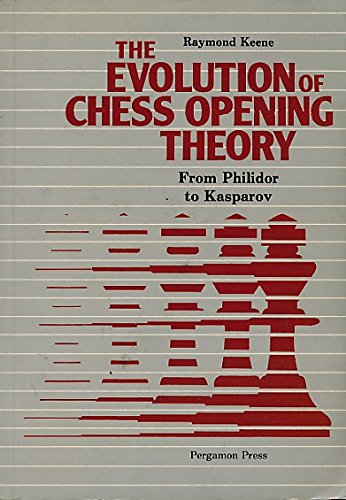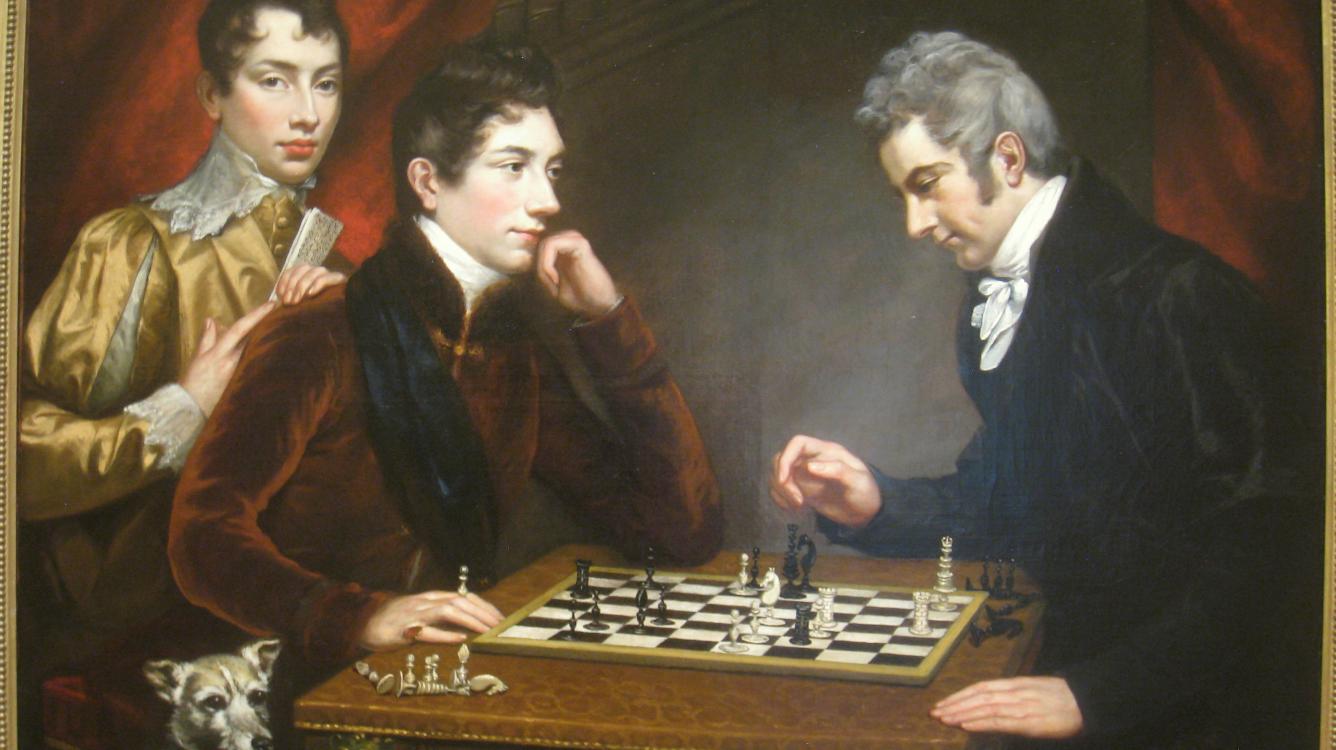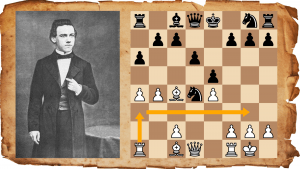- Let’s talk specifics. In light of the principles discussed above, it should come as no surprise that white’s two most popular opening moves are, by a large margin, 1. D4 – The King’s Pawn Opening and the Queen’s Pawn Opening, respectively. These moves are perfectly in accordance with the principles listed above.
- Chess opening training and opening repertoire management. Welcome to the Chesstempo opening training tool. The opening trainer allows you create and manage your opening repertoire, and then train against your repertoire using spaced repetition to optimise your learning.
The Queen’s Gambit is white’s most popular response to the Symmetrical Queen’s Pawn Opening, and the most popular pawn “sacrifice” in chess opening theory by far. C4 helps white fight for a space advantage in the center, which is a key component of the Opening Principles.
Every beginner has to pick an opening at some point in their development as a chess player. Moreover, choosing a good opening repertoire when starting out learning the game can help chess beginners improve their understanding and results faster. So, I decided to dig deep into defining a good opening for chess beginners and providing some examples for anyone that wants to improve at chess can utilize as their primary weapon.
What Is The Best Chess Opening For Beginners?

The best chess openings for beginners follow the main principles of chess openings. Piece development, control of the center, and king’s safety are principles you must consider when picking an opening. Good openings may also help practice many kinds of positions to improve your chess understanding.
I don’t mean that hyper-modern openings with several pawn moves and fianchettos are bad. These openings are, in fact, trendy and playable at the top level. Yet, you need a lot of memorization, understanding, and variant calculation to play them since they usually surrender the initiative to the opponent.
There are plenty of openings to choose out there. However, if you don’t pick openings that follow the principles of chess, it’ll be harder to play them in the middle game and hinder your full potential starting out the game.
In this post, we will go over twelve openings (six for white and six for black). These openings are relatively easy to play, fight for the center from the beginning of the game, focus on piece development, and keep the king safe throughout the game. Without any more to say, let’s get into it.
12 Best Chess Openings for Beginners
The following openings are my recommendations for any chess player that wants to start improving at the opening stage of the game. Whether you prefer 1.e4 or 1.d4, reading along will be helpful for you since I included three opening choices for White and Black (six total) on 1.e4 and the same for 1.d4.
1. Ruy López or Spanish Game
1.e4 e5 2.Nf3 Nc6 3.Bb5
Pros:
- Complex middlegames
- Rich in ideas
- Harmonious piece development
The Ruy Lopez (Spanish Game) is one of the most common openings. It is very rich in ideas, and it can often lead to complicated middlegames and endgames. Chess players have played the Spanish Game since the 16th century because Black has a hard time equalizing in most of the resulting opening variations.
In a nutshell, White tries to put pressure on the center and by playing 3.Bb5, quickly threatening with eliminating the knight on c6 to take the e5 pawn. However, White’s intentions are never to take on e5 as the threat is merely imaginary. For instance, after 3… a6 4.Bxc6 dxc6 5. Nxe5, Black can always play 5… Qd4 with a double attack on the knight and pawn.
There is a lot of theory in the Spanish Game and requires a lot of study to comprehend every strategical detail within the position. I recommend playing the Spanish Game because it will teach you a lot about the game of chess. It is tough to memorize every single line, and you will have to guide your game with basic plans within the position.
2. Giuoco Piano Or The Italian Game
1.e4 e5 2.Nf3 Nf6 3.Bc4
Pros:
- Easy Plan
- Fast piece development
- Controls the center
The Italian Game is another common opening in the Open Games. It was first played in the 16th century, and since then many strong chess players have used successfully. Recently, top grandmasters are opting for the Italian to avoid some of the long theoretical variations of the Spanish Game.
The Italian game is an excellent opening for beginners because it aims to quickly develop pieces and control the center from the very beginning of the game. The bishop on c4 is not only controlling the d5 square but also putting some pressure on the f7 pawn.
Whether you like sharp gambits or a more quiet play, you can find positions in which you feel comfortable in the Italian Game. I recommend it a lot to beginners because you can gain exposure to several different positions that will improve your understanding of the game.
3. The Scotch Game
1.e4 e5 2.Nf3 Nf6 3.d4
Pros:
- Aggressive play-style for White
- White obtains space advantage
- Less theoretical than the Italian and Spanish Game
The Scotch Game does not develop another piece in move three like the Spanish and Italian Game. However, it breaks the center by removing the e5 pawn from the game which provides White’s pieces freedom of movement. It was first played in the early 19th century, and since then, it is not uncommon to see it in tournament games.
Chess players that like complicated positions are going to feel comfortable playing the Scotch Game. Due to the early break in the center, White will need to play incisive to make use of its space advantage since Black has the chance to develop another piece to the game.
I recommend beginners in chess to play the Scotch Game because it will make you learn how to play active moves that interfere with the opponent’s plans. Having a strong tactical skills is also needed when playing this opening.
4. The Queen’s Gambit
1.d4 d5 2.c4
Pros:
- Immediately fights for the center
- Gains space
- Options for attacking or defensive styles
The Queen’s Gambit is one of the most played openings after 1.d4. It immediately aims to fight for the center and gains some space on the queen side. The first Queen’s Gambit game was played in the early 17th century, and it was also an unsurprising opening to see in tournament play.
The pawn on c4 is not guarded at the moment and can be taken. However, White gets the pawn back within a few moves most of the time. I think this is a good opening for beginners because it fights for control of the center, and pieces are developed to “healthy” and logical squares.
Even though the resulting positions of the Queen’s Gambit are not as aggressive as the Open Games (1.e4), White has a lot of flexibility when it comes to choosing between a slow strategical game or a more aggressive stand. I learned how to play this opening when I started to play chess, and I really enjoy playing it.
5. The London System
1.d4 d5 2.Nf3 Nf6 3.Bc4
Pros:
- Black can hardly have active play
- Very solid opening
- Needs little theoretical preparation
- People often underestimate it
Cons:
- Black can equalize the game if prepared
- It does not put any pressure early in the game
The London System is the name for a group of openings that develop the dark-squared bishop to f4 and avoid breaking the center with c4. Although it is a popular opening for beginners to advanced players, it is also played at the top level from time to time. According to my database, this opening was first played in the late 19th century.
The London System may appear as a very modest opening that doesn’t really put any pressure on the Black pieces. However, it is somewhat awkward to play against it as Black due to White’s strong center and logical piece development. It can be a lethal opening as it slowly transfers White pieces to the king-side to mount an attack.
I think this is a good opening for beginners because White develops its pieces freely with little to no counter-play to worry about. It also doesn’t require much theory to know to play it, which leaves you more time to strengthen other aspects of your game.
6. The Torre Attack
1.d4 … 2.Nf3 … 3.Bg5
Pros:
- Harmonious piece development
- Underestimated by chess players
- Less theory than other lines on this list
The Torre Attack is a cousin of the London System variations. It develops the dark-squared bishop to g5 instead of f4. This opening was named after the Mexican grandmaster Carlos Torre who beat the former world champion, Emmanuel Lasker, with a very instructive maneuver in the middlegame labeled “windmill”.
White’s idea in the Torre Attack is to quickly build an attack by either trying to push e4 by playing c3, e3, Bd3, Nd2, 0-0, and then e4 or playing a more lethal set up by placing a knight on e5 and pushing the pawn to f4 if possible.
I think this is a good opening for chess players that are starting to find their way around opening theory because it doesn’t require a lot of knowledge to be executed correctly. Chess players with Black often underestimate the Torre Attack since it is not a very common opening in tournament play.
7. The Caro-Kann Defense
1.e4 c6 2.e4 d5
Cons:
- Solid opening
- Light-squared bishop open for development
Pros:
- White is free to gain space early in the game
- Slow piece development
- Can become very complicated
The Caro-Kann Defense is a common defense against 1.e4. Contrary to 1.e4 e5 (the Open Games), Black opts for a semi-open game in which most resulting positions will have asymmetrical pawn structures. This opening was first played in the middle of the 19th century and has been in the main opening repertoire of many elite players, including former world champion Karpov.
By playing 1… c6, Black sacrifices the center momentarily in exchange of a better pawn structure in most lines. In the Caro-Kann, Black usually aims to slowly suppress White’s initiative by trading some pieces. Black then takes advantage of it’s better pawn structure which leads into better endgames.
I think this might be a good opening for people starting playing chess because it will teach you how to neutralize the opponent’s counter-play and exercise your knowledge in typical endgames.
8. The Petrov Defense
1.e4 e5 2.Nf3 Nf6
Pros:
- Avoids the well know Spanish and Italian Game
- It offers attacking opportunities for Black and White
- Solid
The Petrov/Petroff defense is another common response against 1.e4. It aims to break the center right away by often trading the e pawns which avoids some of the most popular lines with White (Spanish and Italian Game). This opening was first played in the middle of the 19th century.
The Petrov Defense is often judged as boring and dull because a lot of pieces might be traded pretty quickly. However, Black and White can opt for more dynamic positions if desired. This is an opening often played by elite chess players because it is tough to break (if well prepared) as White.
I think this is a good opening option for Black against 1.e4 because it avoids the main theoretical discussion of other well-know openings. In this case, knowing more than your opponent can give you a considerable edge. Pieces are developed reasonably quickly, and black’s king tends to be safe throughout the game.
9. The Sicilian Defense
1.e4 c5
Pros:
- Complicated positions arise
- Black has good chances of mounting an attack
- Good opening if a win is needed
Cons:
- Risky
- Lots of theory
- A lot of variant calculation is needed
The Sicilian Defense is another common reply against 1.e4. This opening imbalances the position by often trading the c-pawn for White’s d-pawn after d4. In such positions, White usually has space advantage in the opening and middle-game. Black gets to have dangerous counterattacking chances in exchange.
Black often marches with its queenside pawn minority (a and b) towards the White king (if White long castles). Meanwhile, White attacks black’s king on the kingside by pushing the correspondent pawns. Thus, double-edged positions are prevalent in the Sicilian Defense in which either black or white checkmates the opponent’s king.
Even though a lot of theory is required to play this opening, I believe that it might be a good weapon for beginners in chess. By studying the Sicilian Defense, you will develop your calculations skills. A lot of times, you will need to sacrifice material to go after the opponent’s king and, at the same time, carefully examine the opponent’s attack to your king.

The Sicilian Defense is the first opening I learned against 1.e4, and I believe that it could be a powerful opening if extensively studied.

10. The Nimzo-Indian Defense
1.d4 Nf6 2.c4 e6 3.Nc3 Bb4
Pros:
- Positionally correct
- Positions with a lot of play for both sides arise
- Black develops quickly
Cons:
- Partially gives the center
- White gets the bishop pair
The Nimzo-Indian Defense is one of the most common openings against 1.d4. Aron Nimzowich developed it in the early 20th century. Instead of fighting for the center with pawns, Black’s play goes around controlling the d5 and e4 square indirectly with pieces.
Black often gets a better pawn structure by trading the dark-squared bishop for the knight on c3, which causes White to have double pawns. White then tries to take advantage of its bishop pair and space advantage. The position arising can become very complex with a lot of strategical and tactical features.
Chess Opening Theory Book
Thus, I recommend this opening for beginners because it can teach you a lot of chess. It will help you learn intricate strategical motifs applied to openings, middle-games, and endgames. I often face this opening as a 1.d4 player, and it is always pretty hard to play against.
11. The Queen’s Gambit Declined
1.d4 d5 2.c4 e6

Cons:
- Temporarily obstructs the light-squared bishop
- Long theoretical lines
The Queen’s Gambit Declined (QGD) is another reliable defense against 1.d4. It reinforces Black’s center by playing 2.e6 by declining White’s pawn sacrifice on c4. According to my database, it was first played at the beginning of the 19th century, and since then, it has been utilized by chess players from all levels.
In the QGD, Black’s light-squared bishop is often obstructed by its pawn chain. In this situation, White tries to take advantage of the Black’s bad bishop, and then Black will try to release it, trade it, or defend its position with it. Thus, Black usually obtains a rock-solid position in the middle-game.
I recommend this opening for beginners at the game of chess, because it can help you master several strategical motifs like weak squares, bad pieces, and minority attacks. As a 1.d4 player, I find the QGD very hard to play against when my opponent is well prepared.
12. The Dutch/Stonewall Defense
1.d4 f5 2… Nf6 3…. e6 4….. d6 5…. c6
Pros:
Chess Opening Theory For Beginners
- Solid setup
- Black can mount an attack to the White king.
- Easy to play
- Often underestimated
Cons:
Chess Opening Theory For Beginners
- Positionaly unsound
- White is ahead in development
- Light-squared bishop temporarily blocked
The Stonewall Defense is a variation of the Dutch defense in which Black configures its pawns on c6, d5, e6, and f5. Such a pawn structure exerts a strong grip on the center and prevents the e4 push by White. In exchange, Black gives White the opportunity of developing its pieces faster and the control of the dark squares (e5).
This opening might look unsound compared to other openings in this list. It moves at least four pawns in the opening, blocks the light-squared bishop, and creates immediate weaknesses on Black’s camp. Yet, Black gets to slowly place its pieces in the correct positions to open the center with c5 or build an attack on the kingside.
I recommend this opening for beginners because it is straightforward to play and to understand as Black. You don’t need to study openings for hours to get the grasp of Black’s ideas in the middle-game.